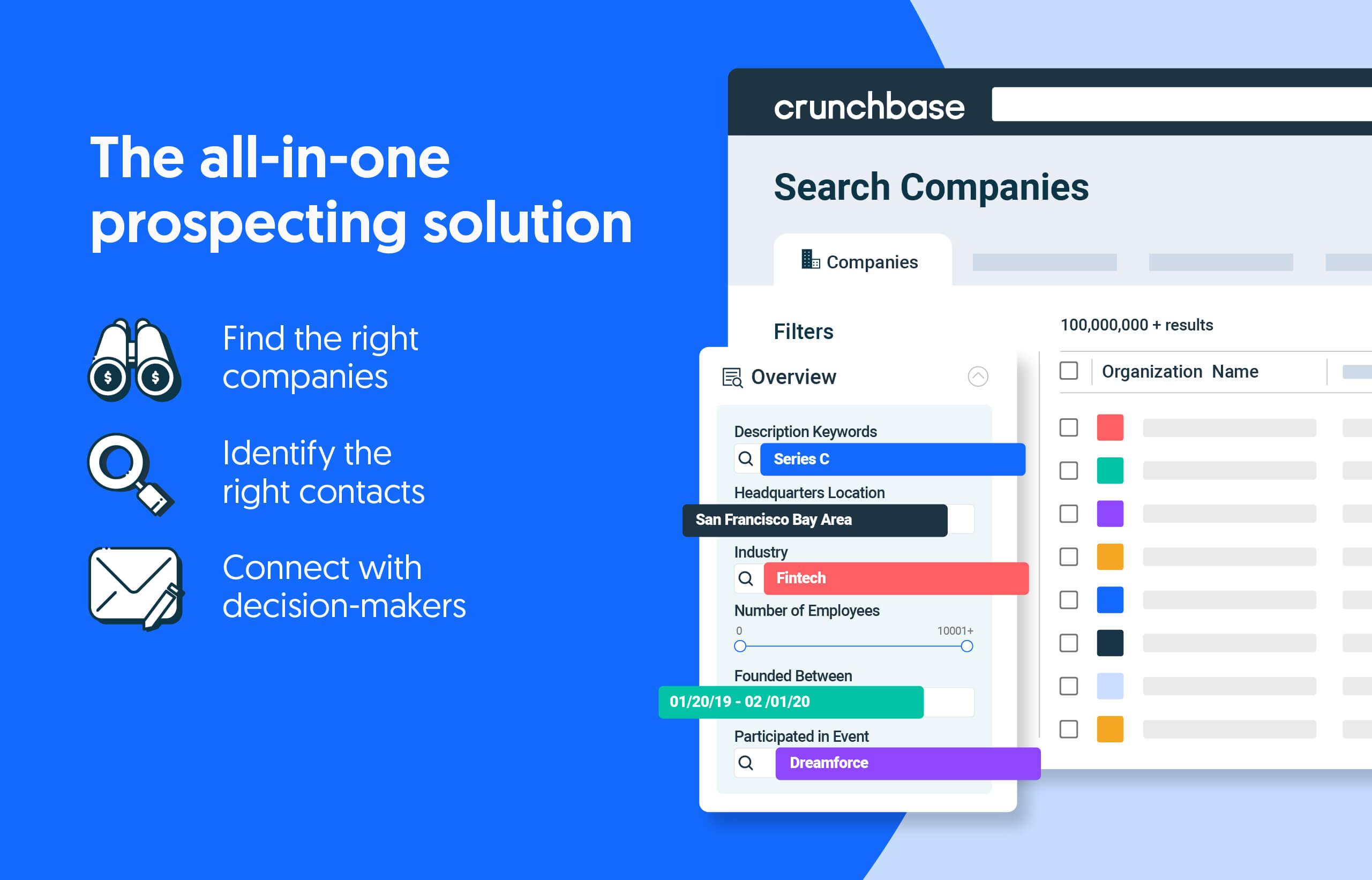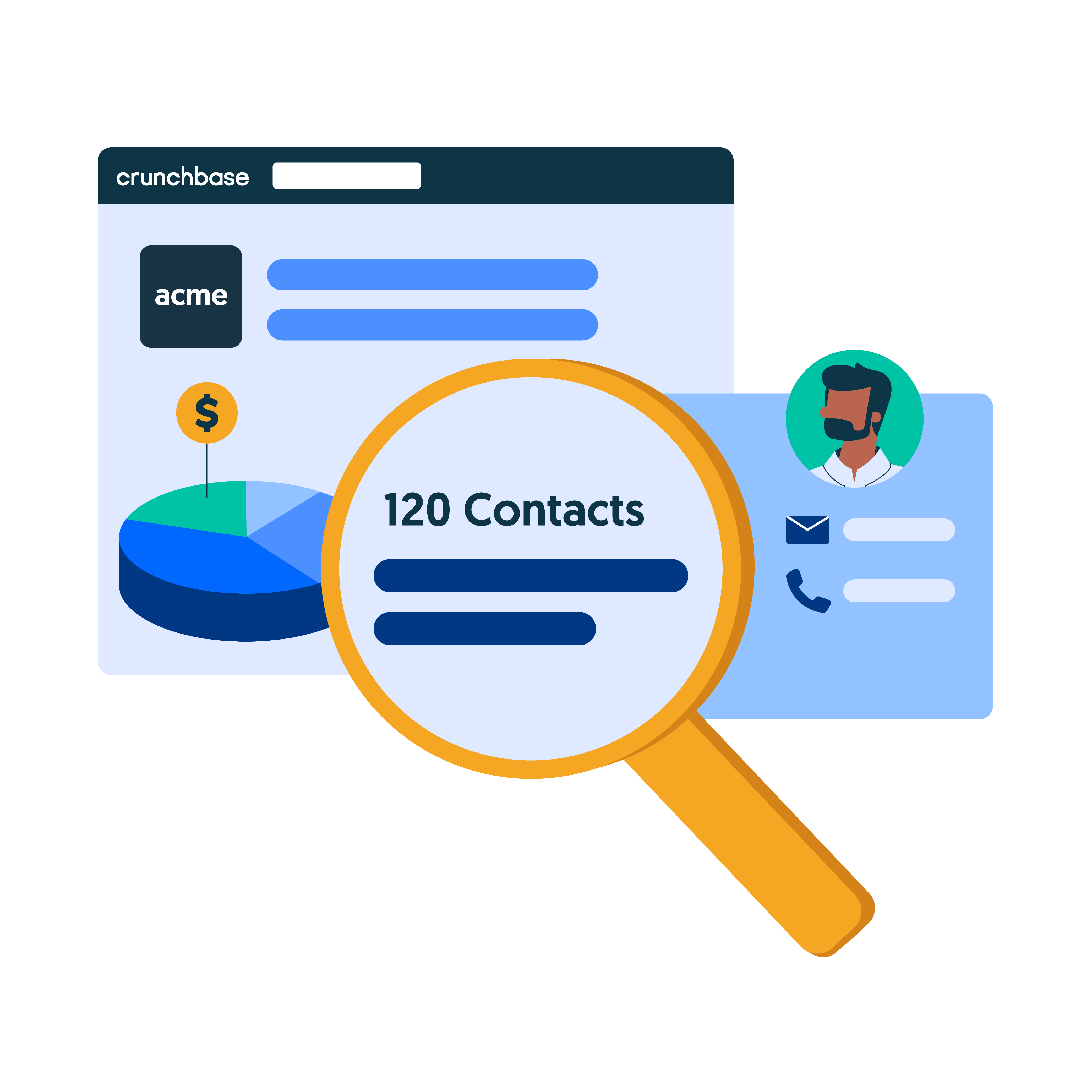In sales, outbound prospecting is all about identifying potential customers, reaching out to them with a persuasive pitch, and ultimately convincing them to buy. But, before you embark on the hunt for prospects, let’s dive into exactly what outbound prospecting is, how it differs from inbound prospecting, and why it’s still an important sales strategy in 2023.
We’ll also let you in on five secrets to outbound success that will help you close more deals this year – even in the face of an unpredictable economic climate.
Ready to hit your quota with a successful outbound prospecting strategy? Here are the questions we’ll answer in this guide:
- What is the definition of outbound prospecting?
- What’s the difference between outbound and inbound prospecting?
- Who does outbound prospecting?
- Why is outbound prospecting still an important sales strategy in 2022?
- What do you need to do before you start research and outreach?
- What are the 5 secrets to outbound prospecting success in 2022?
Search less. Close more.
Grow your revenue with all-in-one prospecting solutions powered by the leader in private-company data.
What is the definition of outbound prospecting?
Outbound prospecting (or outbound sales) is the process in which sales professionals search for, identify, and reach out to prospects. The ultimate goal is to introduce prospects into the sales cycle and convert them into paying customers.
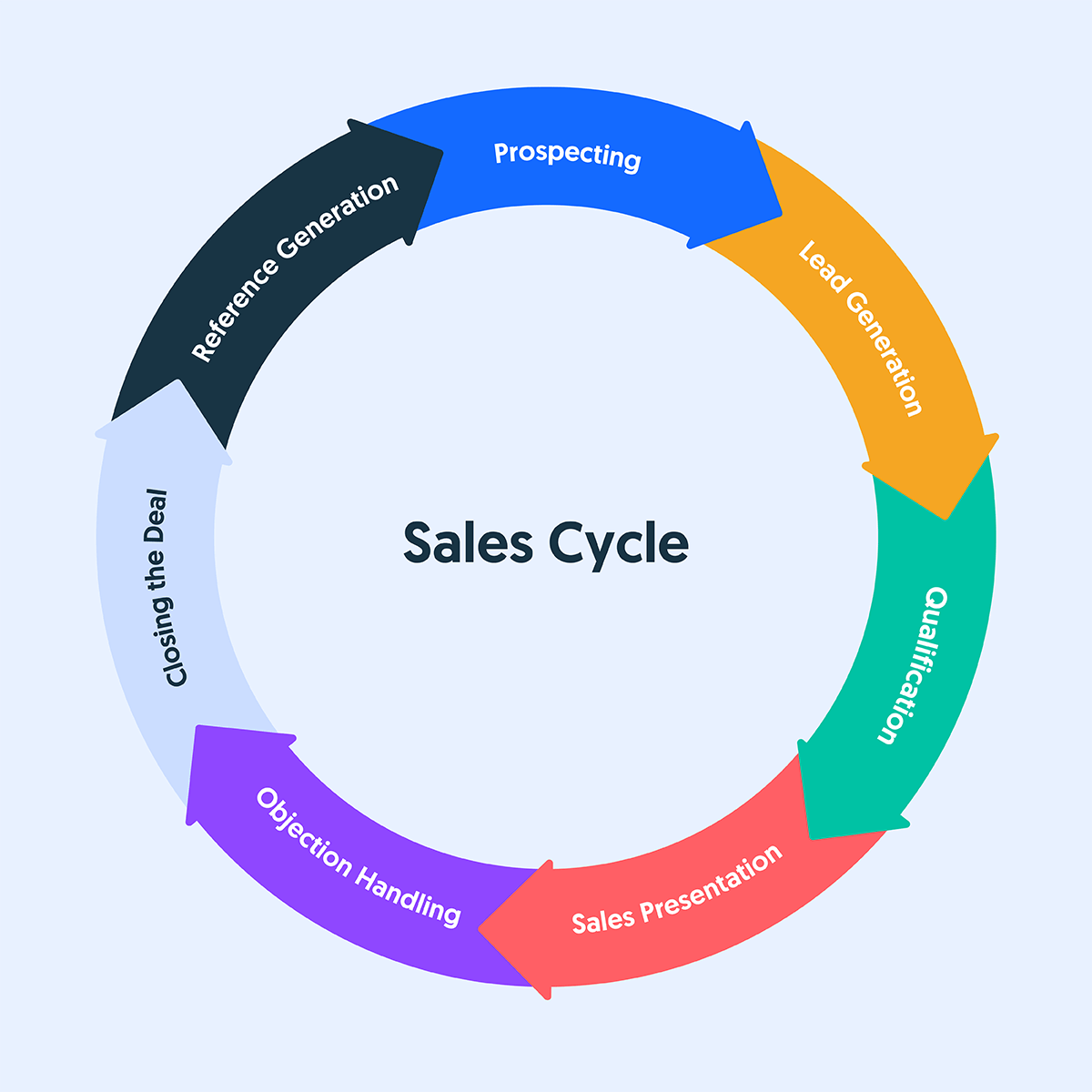

Generally, this type of sales prospecting centers around cold outreach. This means the lead or prospect being contacted didn’t indicate their interest in your company before the sales team reached out. Cold calling, cold emailing, and any other “cold” contact strategy fall into the outbound sales bucket.
What’s the difference between outbound and inbound prospecting?
In contrast from outbound sales, inbound sales rely heavily on marketing efforts to drive prospect action or engagement before sales representatives reach out. Instead of sales teams researching and scoping out new leads, marketing will track who engaged with your website, content, research reports, or social media channels (i.e. they downloaded the report, or filled out a form to learn more), and pass this list on to the sales team. Sales teams will then make contact, and hopefully, convert these leads to paying customers.
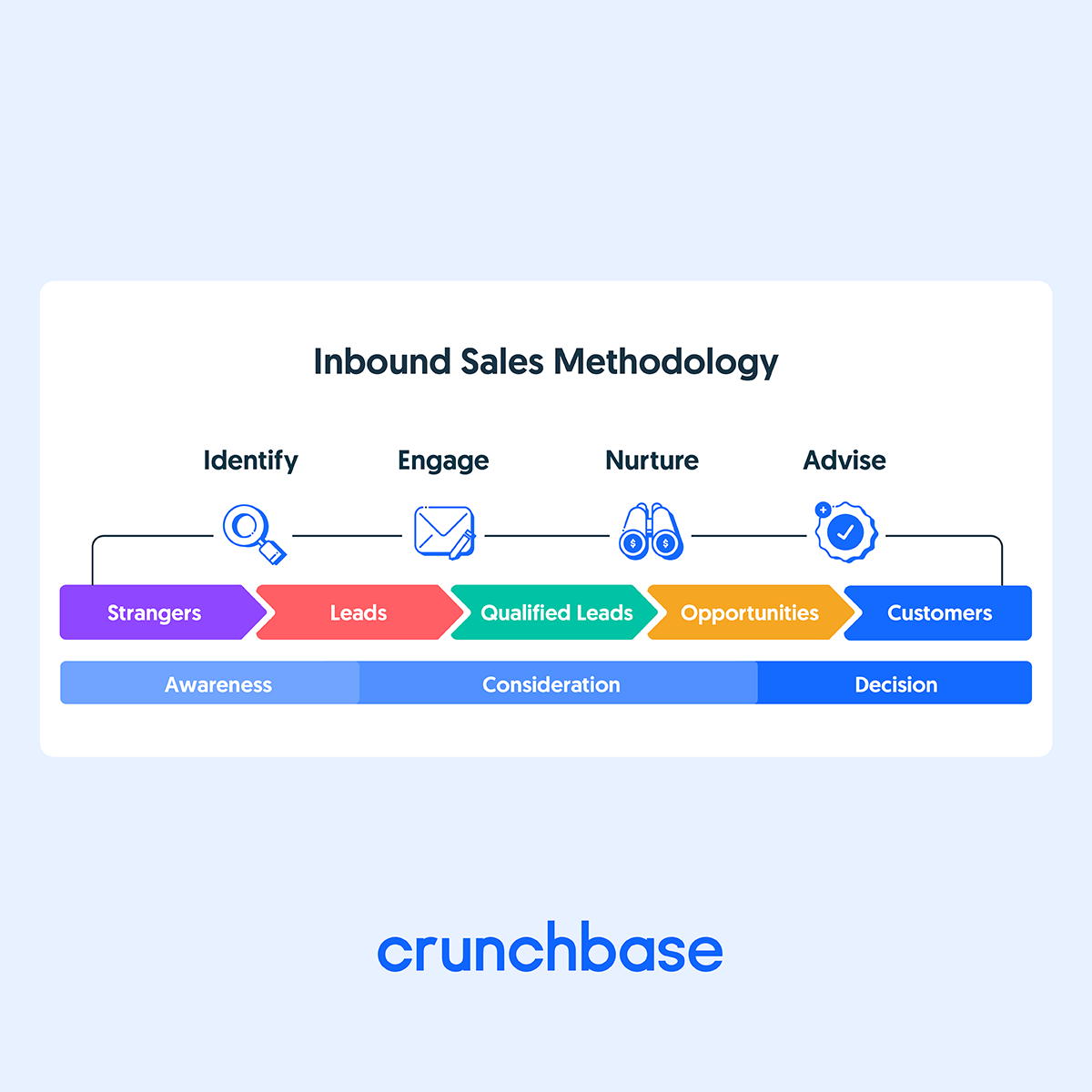

The excitement around inbound prospecting comes from the idea that if prospects initiate contact with your company before you reach out, they are more likely to convert. This is also why some marketers made the prediction that outbound prospecting was outdated. But, in reality, it all depends on your business model, goals, and product.
If you have great SEO and a ton of people coming to your website and searching for your solutions, inbound could be the right strategy for you. On the other hand, if your solution is relatively unknown because it’s unique or new, or if you’re selling to B2B enterprise clients, outbound prospecting is likely a better strategy–you don’t want to sit around waiting for prospects to somehow stumble across your company. Here’s more information about inbound versus outbound sales to help you choose which strategy to invest in.
Who does outbound prospecting?
Generally, outbound sales teams are made up of sales professionals with the following job titles and responsibilities:
- Sales Development Representatives (SDRs): SDRs are most often the ones responsible for finding new leads and prospects, sending cold emails and making cold calls.
- Business Development Representatives (BDRs): BDRs focus less on outbound sales and more on inbound sales, partnering with marketing teams to qualify inbound leads and bridge the gap between sales and marketing.
- Account Executives (AEs): AEs are most commonly thought of as the “closers.” They focus on connecting with prospects, making presentations, and conducting demos (for B2B sales these demos also generally include a technical presales resource). They answer prospect questions, handle any objections, and ideally close the sale.
Why is outbound sales still an important sales strategy in 2023?
There’s no question that inbound sales close rates are generally higher than outbound close rates. It just makes sense that someone who initiated contact by reaching out about a product or service is more likely to convert.
But, as we move through 2023, there’s still a strong argument to be made for outbound prospecting (especially for B2B sales), and that argument has a lot to do with sales data and intelligence.
Thankfully we are moving away from the days of the “spray and pray” approach to sales, where SDRs send mass emails to lists of individual leads based on job title and territory. We’re now moving toward a more intentional, account-based sales approach that’s not only highly targeted but also takes into account key buy signals and sales data like trigger events that indicate a company may be in a position to purchase. Account-based prospecting highlights which companies are growing and in a position to buy, minimizing time spent on deals that aren’t likely to close.
Incorporating relevant, timely account data, combined with genuine personalization can make cold outreach feel like warm outreach, boosting your chances of making contact and closing the deal.
What do you need to do before you start research or outreach?
There’s one more critical step you and your team need to take before you set out on your quest for prospects — you must first define your ideal customer profile. Before you can go out and get new customers, you need to understand exactly what you are looking for – and it’s no surprise sales data and your existing customer base can help you do just that.
Your ICP should reflect the type of company that would benefit the most from your product or solution. Examine your existing customer base and identify trends and similarities, and pay close attention to the accounts you’ve closed recently (they can be a gold mine for finding new opportunities). Most importantly, your ICP should include specific firmographic information such as technographic data, funding or IPO status, company size, revenue, industry, and location.
Search less. Close more.
Grow your revenue with all-in-one prospecting solutions powered by the leader in private-company data.
Once you know specific information about the companies you’re searching for, you’re ready to unlock the 5 secrets that will lead you to outbound sales success in 2023 and beyond.
5 secrets to outbound prospecting success in 2023
1. Do your research & personalize your outreach.
Don’t just pick up the phone, send an email or slide into the DMs of a prospect without doing your due diligence. You need to understand the wants and needs of your prospects for your outreach efforts to be successful. Check for trigger events and buy signals. Did they just raise a new funding round? Get mentioned in the news? Hire a new executive? You should know all this and more, and personalize your communication according to the information you have gathered for your outbound prospecting.
Search less. Close more.
Grow your revenue with all-in-one prospecting solutions powered by the leader in private-company data.
Not quite sure how to effectively personalize your outreach? There are plenty of resources out there, but we love this tactic shared with us by sales pro and founder of #samsales Consulting, Samantha McKenna:
2. Invest in high-quality, dynamic data.
Speaking of research, the information you gather about potential customers won’t be of much use if it’s inaccurate and outdated. Tools like Crunchbase Pro unlock access to the latest private company data and integrate directly into your Customer Relationship Management (CRM) platform. This way, you can be confident that when you email a prospect about, say, their latest press release, you aren’t referencing old news.
With Crunchbase Pro, you can also better target qualified prospects that are actively hiring, showing no layoffs reported and hiring leadership roles; and leverage trusted first-party funding data, revenue data, buy signals and firmographics.
No matter the economic climate, you can also stay up to date on growing companies with the Lead List, which features companies that have recently raised new funding and are closer to becoming unicorns.
3. Explore new mediums and channels.
When it comes to outbound prospecting tactics, emails and cold calls aren’t going anywhere, but don’t feel limited to these forms of communication. Ever fancied yourself a film star? Well now is the time to test those on-screen chops. Try connecting with your prospect by sending a personalized video, a nice change from the text-only emails that dominate their inbox.
Does a video feel like too much, too soon?
Look no further than your Twitter or LinkedIn account. When you leverage social media, you can contact your target accounts without disrupting their day, answer questions, and share relevant content until your prospect is ready to engage on other channels and make a buying decision. This technique is called social prospecting, and it’s an effective strategy for both identifying and nurturing your prospects.
4. Create a schedule and stick to it.
Once you’ve determined the cocktail of prospecting strategies that work best for your business, establish a regular cadence for how often you reach out to prospects. You’re toeing a fine line here between contacting them enough that they don’t forget about the great product or service you’re selling and giving them enough space and time between touchpoints that they don’t feel smothered.
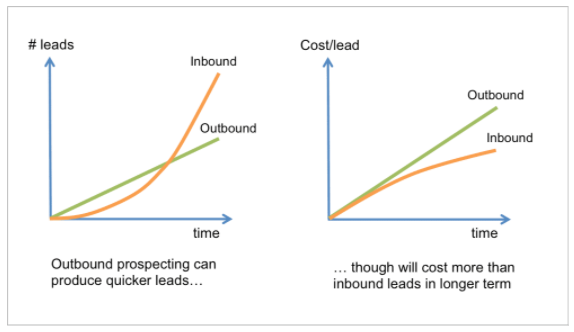

Photo source: Outbound Prospecting: 2 reasons why it still matters in an Inbound Marketing world (Nicola Sanna)
With Crunchbase Pro, you can ensure the timing of your outreach is informed by company growth signals and news to stay relevant in today’s fast-changing circumstances.
Another thing to think about is the quality of what you’re offering each time you engage. Are you sharing valuable, relevant content, news, or research reports, or begging for a response? Think about how to showcase your company’s value every time you interact in a genuine way. And remember, being genuine in your interactions requires empathy.
5. Measure your results.
Have you been using a subject line that practically guarantees your email is opened? What about sharing a piece of content that consistently garners a follow-up meeting? Take note! Measure what’s working, what’s not, and optimize accordingly. The more data you collect about and apply to your outbound prospecting efforts, the more successful you’ll be over time.
Not sure which sales KPIs you should be tracking? Here’s a helpful breakdown of the sales KPIs that do and don’t matter from sales leader Shamus Noonan. (Spoiler alert, he doesn’t recommend tracking the number of emails sent or call attempts).
For additional outbound sales tips and tricks that will help you generate revenue this year, take a look at the Crunchbase Blog. And, don’t forget to download our 2023 Sales Guide for more tips on how to sustain a strong outbound sales pipeline this year.
This article was last updated on April 7, 2023.


